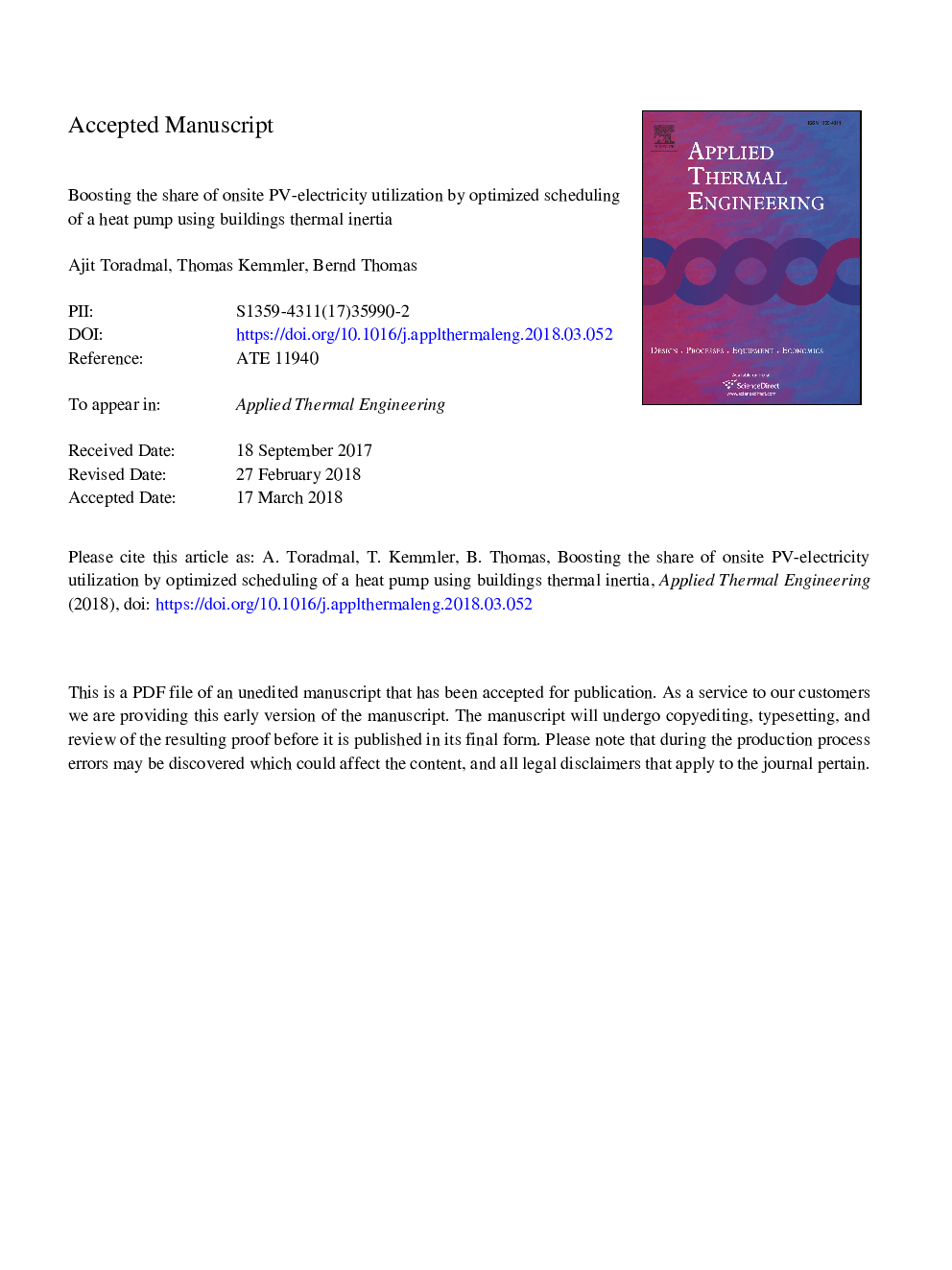| کد مقاله | کد نشریه | سال انتشار | مقاله انگلیسی | نسخه تمام متن |
|---|---|---|---|---|
| 7045412 | 1457092 | 2018 | 18 صفحه PDF | دانلود رایگان |
عنوان انگلیسی مقاله ISI
Boosting the share of onsite PV-electricity utilization by optimized scheduling of a heat pump using buildings thermal inertia
دانلود مقاله + سفارش ترجمه
دانلود مقاله ISI انگلیسی
رایگان برای ایرانیان
کلمات کلیدی
موضوعات مرتبط
مهندسی و علوم پایه
مهندسی شیمی
جریان سیال و فرایندهای انتقال
پیش نمایش صفحه اول مقاله

چکیده انگلیسی
Coupling electricity and heat sector is one of the most necessary actions for the successful energy transition. Efficient electrification for space heating and domestic hot water generation is needed for buildings, which are not connected to any district heating network, as distributed heating demand momentarily is largely met by fossil fuels. Hence, hybrid energy systems will play a pivotal role for the energy transition in buildings. Heat pumps running on PV-electricity is one of the most widely discussed combination for this purpose. In this paper, a heuristic optimization method for the optimal operation of a heat pump driven by the objective for maximum onsite PV-electricity utilization is presented. In this context, the thermal flexibility of the building and a thermal energy storage (TES) for generation of domestic hot water (DHW) are activated in order to shift the operation of the heat pump to times of PV-generation. Yearly simulations for a system consisting of heat pump, PV modules, building with floor heating installation and TES for DHW generation are carried out. Variation parameters for the simulation include room temperature amplitude (0.5, 1, 1.5 and 2â¯K) based on mean room temperature (21â¯Â°C), PV-capacity (4, 6, 8 and 10â¯kW) and type of heat pump (ground source and air source type). The yearly energy balances show that buildings offer significant thermal storage capacity avoiding an additional, large TES for space heating fulfillment and improving the share of onsite PV-electricity utilization. With introduction of a battery, which has been analyzed as well for different sizes (1.9, 4.8, 7.7 and 10.6â¯kWh), the share of onsite PV-electricity utilization can even be improved. However, thermal flexibility supplemented by the varying room temperature amplitude for a bigger battery does not improve the share of onsite PV-electricity utilization. Nevertheless, even with a battery not more than 50% of the electrical load including operation of the heat pump can be covered by PV-electricity for the specific system under investigation. This is noteworthy one the one hand, since it indicates that a hybrid heating system consisting of heat pump and PV cannot solely cover the heat demand of residential buildings. One the other hand, this emphasizes the necessity to include further renewable sources like wind power, in order to draw the complete picture. This, however, is beyond the scope of this paper, which mainly focuses on introduction and verification of the novel control method with regard to a practical building.
ناشر
Database: Elsevier - ScienceDirect (ساینس دایرکت)
Journal: Applied Thermal Engineering - Volume 137, 5 June 2018, Pages 248-258
Journal: Applied Thermal Engineering - Volume 137, 5 June 2018, Pages 248-258
نویسندگان
Ajit Toradmal, Thomas Kemmler, Bernd Thomas,